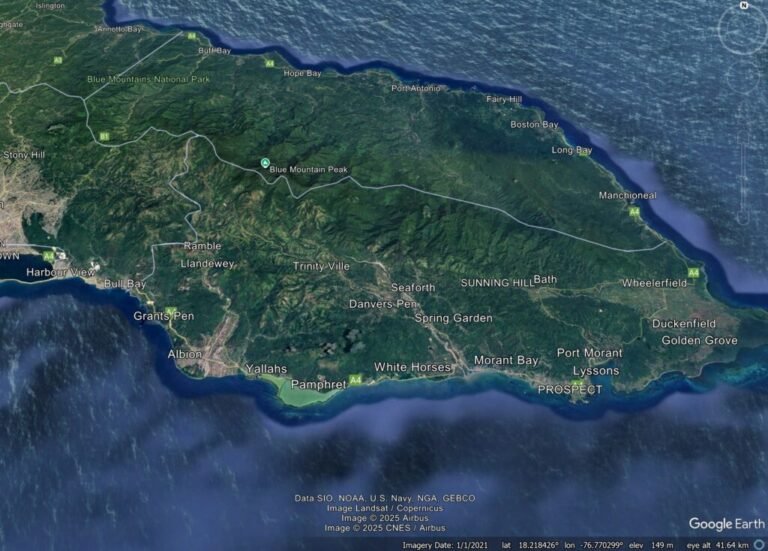

The United States could consume the added-sugar equivalent of as much as 7 billion additional cans of soda per year by 2095 as a result of climate change, according to a new study.
A new analysis of food consumption patterns and weather data in the country, published in Nature Climate Change, showed that warmer temperatures increase household purchases of food and beverage products with added sugar, especially among low-income and less educated populations.
“There’s a huge difference across different socioeconomic groups.”
“There’s a huge difference across different socioeconomic groups,” said Duo Chan, a climate scientist at the University of Southampton and coauthor on the new study.
Researchers analyzed retail food and drink purchases in more than 40,000 U.S. households from 2004 to 2019 along with monthly average temperatures at the county scale. They found that the average adult male purchased about 0.70 gram of additional added sugar per day for every additional 1°C (1.8°F) of temperature between 12°C (53.6°F) and 30°C (86°F).
Researchers ran multiple regression analyses to rule out other factors that could have influenced the purchasing of sugary products. With the effects of other variables, such as changes in product price, removed, added-sugar intake remained significantly associated with temperature, Chan said.
“It’s the change in temperature that [leads] to the sugar intake,” said Pengfei Liu, an environmental economist at the University of Rhode Island and coauthor of the new study.
The trends, according to the authors, are probably driven by people choosing hydrating, sweet beverages and cold desserts to mitigate the effects of heat. The patterns are “common sense,” said Thalia Sparling, a public health researcher at the London School of Hygiene & Tropical Medicine who was not involved in the new research. “Of course, when it gets hotter, you’re going to want to sit on the porch with your friends and have a cold drink or eat more ice cream.”
Education and income levels of the heads of households influenced how sensitive those households’ sugar consumption patterns were to increases in temperature. Households in which the head of household had a lower income and was less educated increased their added sugar purchases more per degree of increased temperature. Purchases of sweetened beverages and frozen desserts constituted the bulk of the increased sugary purchases.
The study authors used Coupled Model Intercomparison Project Phase 6 (CMIP6) climate models to project that warming temperatures in a high-emissions world could change diets enough to add nearly 3 grams of sugar per day to the average U.S. diet by the end of the century—equivalent to about 30 cans of soda per person per year. The projected effects were unequal among socioeconomic groups, too, with lower-income and less educated households expected to increase their sugar intake more than their higher-income, more educated counterparts.
Dietary Inequality
“This is just another piece of evidence showing that the impacts of climate change on people are not equal.”
“This is just another piece of evidence showing that the impacts of climate change on people are not equal,” Sparling said.
Nutrition researchers have long known that lower-income groups eat less healthily, Sparling said, because of economic factors, lack of access to healthier foods, and even work environment. “People in communities with lower average [socioeconomic status] are less likely to have air-conditioned workplaces, schools, homes, or respite in other ways,” she said. Those without a way to escape the heat may be more likely to reach for cold, sweetened drinks or desserts for relief.
“Low-income people are most vulnerable to climate change in a lot of cases, and also in our case, in terms of excessive sugar intake,” Chan said.
Higher added-sugar consumption can increase the risk of various health problems such as obesity, diabetes, and heart disease. But because the causes behind health problems are so complex, much more research would be needed to link warming to specific increases in disease, Sparling said.
She stressed that the onus to improve dietary choices should not be all on the individual: “You have to look at systems level change,” she said. Policies such as taxes on sweetened beverages have decreased added sugar consumption in some cities and countries. Education in communities, schools, and churches can also help people form healthier habits, Sparling said.
More research is needed to determine whether the trends seen in the United States are reflected across the globe, said Pan He, an environmental social scientist at Cardiff University and first author of the new study. Then, scientists could have an even more comprehensive understanding of how global food consumption patterns may adapt to climate change, she said.
“I hope our study may shed light on future evidence in developing countries, where sugary-beverage intake is already high and rising heat could further threaten nutrition security,” wrote Yan Bai, an economist at the World Bank and coauthor of the new study, in an email.
—Grace van Deelen (@gvd.bsky.social), Staff Writer
Citation: van Deelen, G. (2025), Heat spurs unequal consumption of sweet treats, Eos, 106, https://doi.org/10.1029/2025EO250333. Published on 8 September 2025.
Text © 2025. AGU. CC BY-NC-ND 3.0
Except where otherwise noted, images are subject to copyright. Any reuse without express permission from the copyright owner is prohibited.


